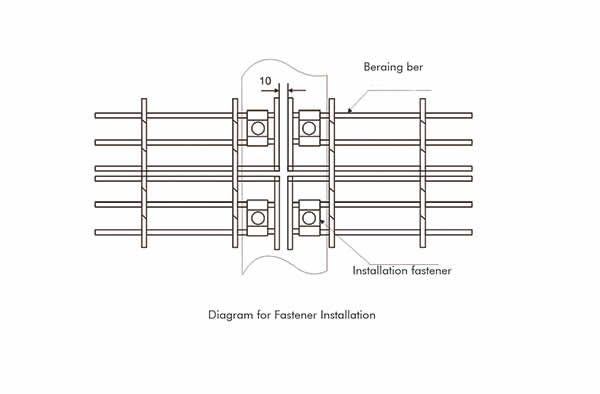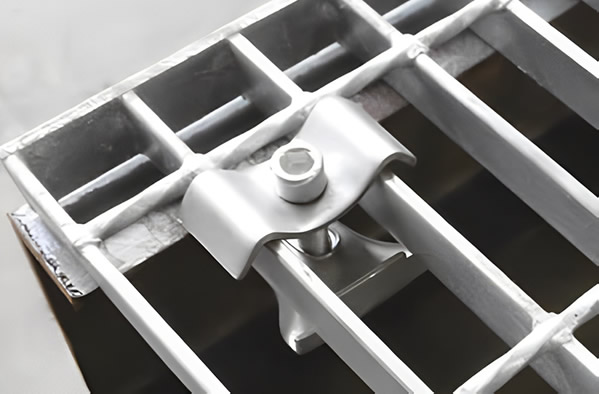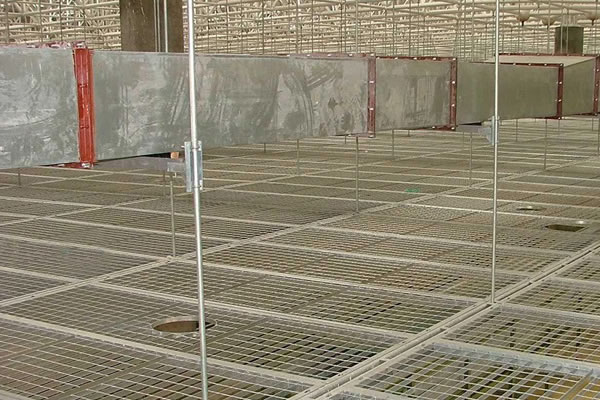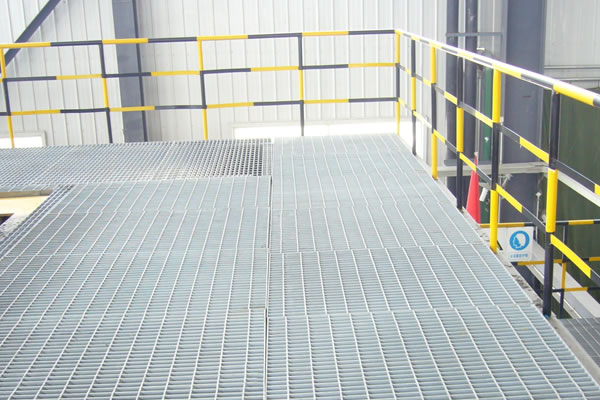Hebei ZhenXing JinYuan Wire Mesh Group excels in exporting and manufacturing Aluminum Grating products, recognized for their lightweight yet durable design. These gratings offer a superior strength-to-weight ratio, making them both efficient and practical for various applications. Designed with precision, they cater to a wide range of environments, seamlessly combining functionality and ease of use. The lightweight nature of our Aluminum Grating simplifies handling and installation while reducing structural stress. Its outstanding corrosion resistance gives it an edge over materials like steel or fiberglass, particularly in corrosive environments where long-term durability is crucial. Additionally, the sleek and modern appearance of our aluminum grating is in high demand for architectural designs, offering an attractive blend of aesthetics and functionality. This adaptability to diverse environmental conditions, coupled with its appealing design, establishes our Aluminum Grating as a versatile and desirable material for numerous applications, perfectly balancing practicality with aesthetic appeal.
Application
Here are some scenarios where aluminum gratings must be used and their purposes:
- Corrosion Resistance Requirements: Aluminum is inherently resistant to corrosion, making it ideal for environments exposed to corrosive substances or in coastal areas where saltwater can cause significant damage to other materials.
- Weight-Sensitive Applications: Due to its lightweight nature, aluminum grating is essential in applications where reducing load is crucial. This includes fields like aerospace, transportation (particularly in vehicles or ships), and certain architectural designs where minimizing structural stress is important.
- Electrical and Thermal Conductivity: In settings where non-magnetic properties and electrical conductivity are important, such as in certain industrial or technological environments, aluminum gratings are preferred.
- Chemical Plants: In environments with exposure to certain chemicals, aluminum’s chemical resistance makes it a more suitable choice than materials like steel, which might corrode or degrade.
- Aesthetic Applications: For architectural applications where appearance is as important as functionality, aluminum gratings are chosen for their modern look and the ability to be anodized for color variation.
- Fire Resistance: Aluminum maintains its structural integrity better than fiberglass in fire-prone areas, though it has a lower melting point than steel.
- Outdoor and Recreational Areas: For outdoor parks, pedestrian bridges, and recreational spaces, aluminum grating is favored for its combination of durability, low maintenance, and aesthetic appeal.
Processing of Aluminum Grating


Our Aluminum Grating is manufactured using advanced techniques to ensure both quality and durability. We primarily utilize press-locking, a method that meets industry standards and caters to specific client needs. Every stage of the process, from choosing materials to the final finishing touches, is handled with great care, guaranteeing reliable and high-performing grating. While traditional electric welding is not typically used for aluminum grating due to its lower melting point and higher thermal conductivity, we often opt for mechanical fastening methods like bolts or clips. These provide ample strength and stability for most applications, are simpler and require less labor, and facilitate easy disassembly when needed.
General Specifications for Aluminum Grating
- Material Composition: Aluminum gratings are made from high-quality, lightweight aluminum alloy. The specific alloy used can vary depending on the strength and corrosion resistance required for the application.
- Bar Dimensions: The size and spacing of the bearing bars and cross bars are crucial. Specifications often include the depth and thickness of the bearing bars, as well as the spacing between them (center-to-center distance).
- Bearing Bar Dimensions:
Depth: The depth of the bearing bars can vary depending on the application’s load requirements. Common depths range from 20mm to 75mm.
Thickness: The thickness of the bearing bars is also variable. Standard thicknesses typically range from 3mm to 6mm. - Bearing Bar Spacing:
Center-to-Center Distance: The spacing between the center points of adjacent bearing bars is critical for load distribution and passage of light and materials. Common center-to-center spacing options for aluminum grating include:
15mm: Provides a tighter mesh, often used for high-heel traffic and finer aesthetic appearance.
20mm: Offers a balance between strength and open area, suitable for general purposes.
30mm: Commonly used in industrial applications where larger open areas are preferred.
40mm: Provides the largest open area, suitable for applications requiring less frequent foot traffic and where larger debris passage is necessary. - Cross Bar Dimensions:
Diameter or Thickness: Cross bars typically have a smaller profile compared to bearing bars. Their diameter or thickness generally ranges from 5mm to 10mm. - Cross Bar Spacing:
Center-to-Center Distance: The spacing between cross bars is usually uniform and provides lateral stability to the grating. Typical spacing for cross bars in aluminum grating ranges from 50mm to 100mm. - Grating Dimensions: Overall dimensions of the grating panels, such as length and width, are specified to fit different installation requirements. The general dimensions for Aluminum Grating panels, including length and width, are designed to suit a wide range of installation requirements.
Length: The length of Aluminum Grating panels typically ranges from 500mm to 6000mm. Custom lengths can also be produced to meet specific project requirements.
Width: The standard width for Aluminum Grating panels usually falls between 250mm and 1200mm.
Like length, width can also be customized to accommodate unique installation needs.
It’s important to note that while these are common ranges, Aluminum Gratings can be manufactured to almost any size within practical limits to ensure they fit the specific needs of various projects. This flexibility allows for their use in a diverse array of applications, from small walkways to large industrial platforms.
Product aliases and Applications
- Aluminum Bar Grating: Known as Aluminum Bar Grating, this variant emphasizes the bar structure in its design. Made from high-strength aluminum, it provides excellent load-bearing capabilities and corrosion resistance. Its lightweight nature makes it ideal for applications where ease of installation and minimal structural stress are crucial.
- Aluminum Walkway Grating: Known as Aluminum Walkway Grating, this type is designed specifically for foot traffic areas. Its non-slip surface and lightweight nature make it ideal for pedestrian walkways, platforms, and stair treads, offering safety without the need for heavy support structures.
- Industrial Aluminum Grating: Termed Industrial Aluminum Grating, this variant is tailored for industrial applications. It combines the strength and durability of aluminum with a design suited for heavy loads and high-traffic areas, making it a reliable choice for industrial flooring and machinery platforms.
- Architectural Aluminum Grating: Architectural Aluminum Grating focuses on aesthetic applications. Its appealing design and functional qualities make it suitable for facades, sunscreens, and decorative features in buildings, blending seamlessly with modern architectural styles.
- Aluminum Platform Grating: Referred to as Aluminum Platform Grating, this type is designed for use in platform applications. Its strength and corrosion resistance make it suitable for elevated structures in various environments, from industrial sites to outdoor recreational areas.
Surface Treatment of Aluminum Grating
The surface treatment of Aluminum Grating primarily involves processes designed to enhance its durability, appearance, and resistance to environmental elements. Each of these treatments enhances the properties of aluminum grating in different ways, making them suitable for a variety of applications, from industrial settings to decorative architectural uses. The choice of surface treatment depends on factors like the intended use, exposure conditions, and desired aesthetic effect. Common surface treatments for Aluminum Grating include:
- Anodizing: This electrochemical process thickens the natural oxide layer on the surface of aluminum. Anodizing increases corrosion resistance and wear resistance, and it can also be used to add color to the grating, enhancing its aesthetic appeal. Anodized aluminum grating is especially suitable for architectural applications where both durability and appearance are important.
- Powder Coating: This involves applying a dry powder – typically a polymer resin mixed with pigments and other additives – which is then cured under heat to form a skin. Powder coating provides a uniform, durable, and high-quality finish. It offers excellent resistance to chipping, scratching, fading, and wearing, and comes in a variety of colors.
- Painting: Similar to powder coating, painting is another way to add color and additional protective layer to aluminum grating. It can provide some degree of corrosion resistance, though it’s generally less durable and wear-resistant than anodizing or powder coating.
See pictures for examples

This variant emphasizes the bar structure in its design. Made from high-strength aluminum, it provides excellent load-bearing capabilities and corrosion resistance. Its lightweight nature makes it ideal for applications where ease of installation and minimal structural stress are crucial.

Referred to as Aluminum Mesh Grating, this type emphasizes its mesh-like design, offering excellent ventilation and light passage. This feature makes it suitable for architectural applications, where both functionality and aesthetic appeal are important.

